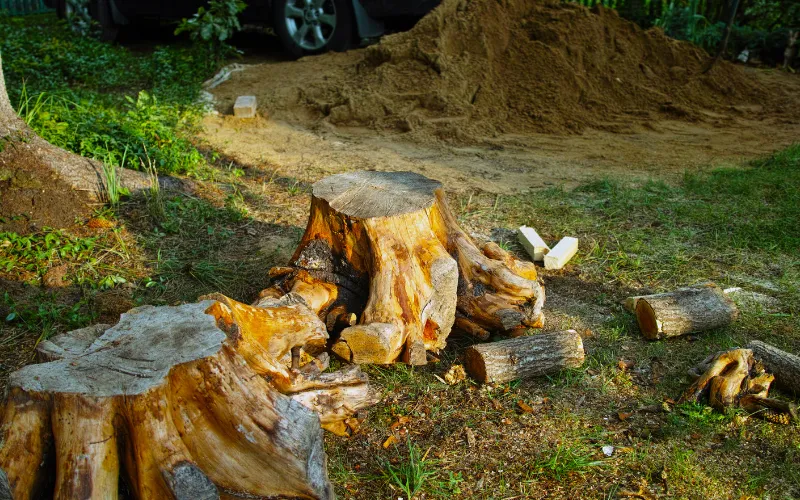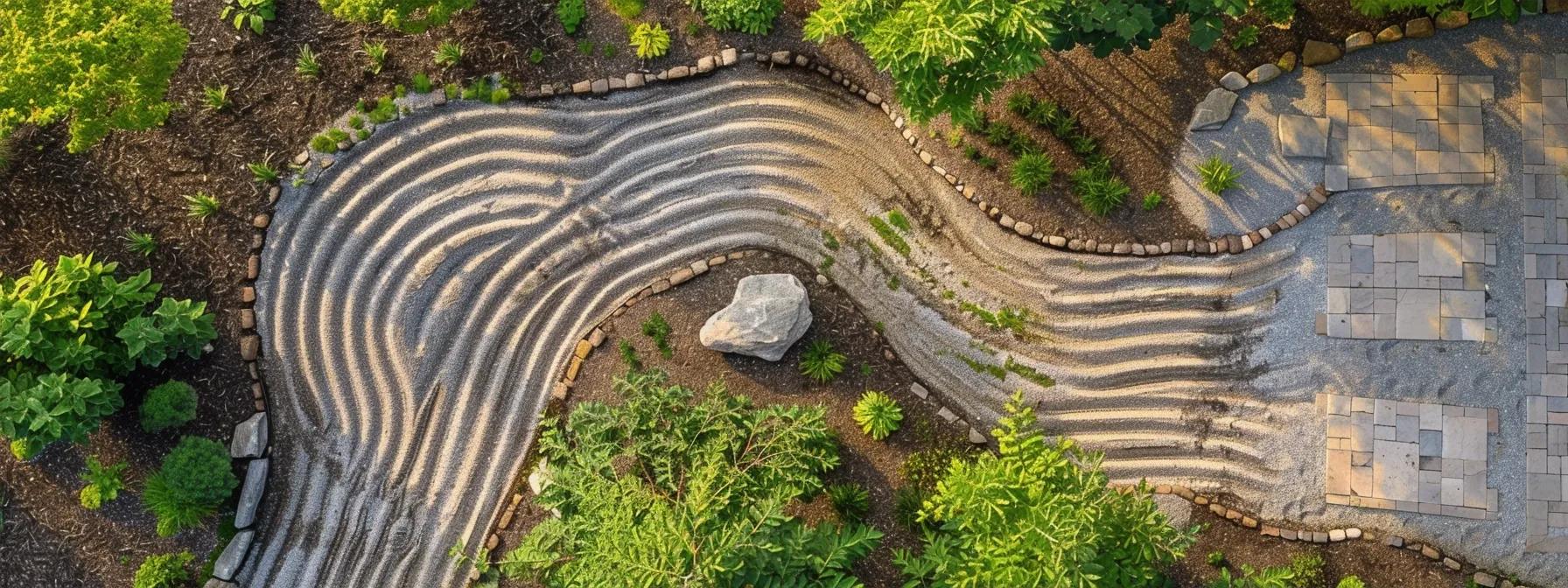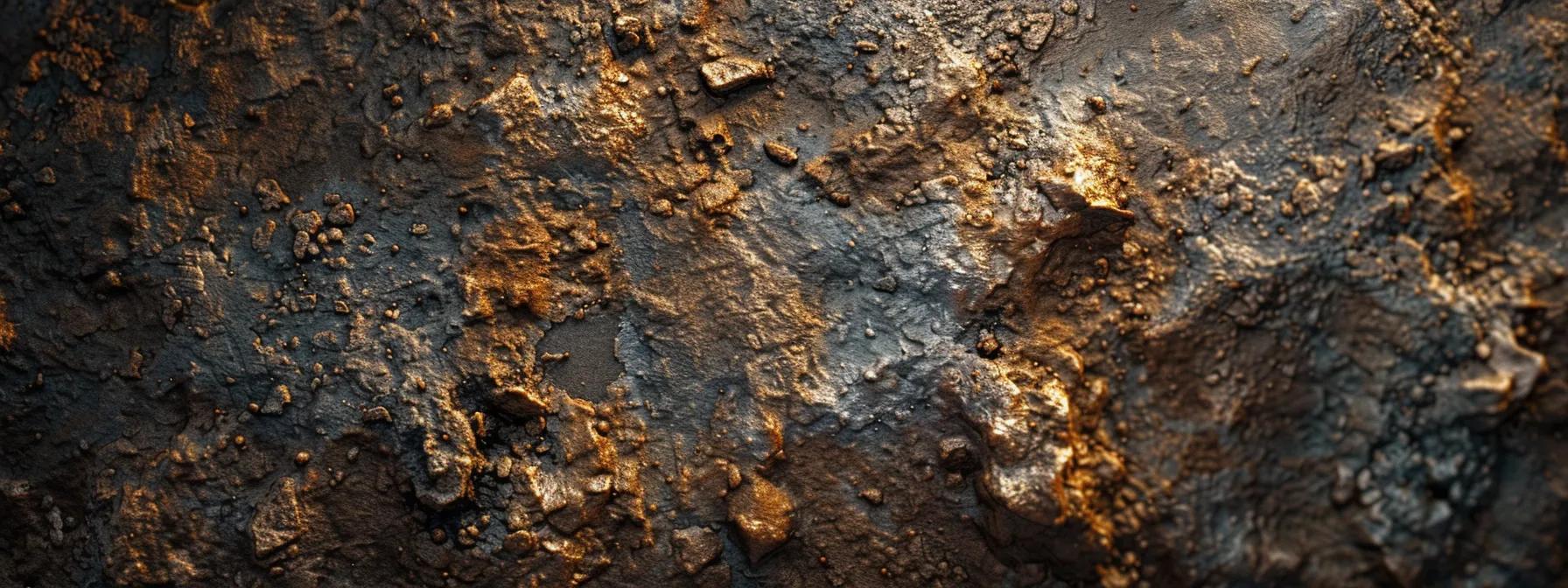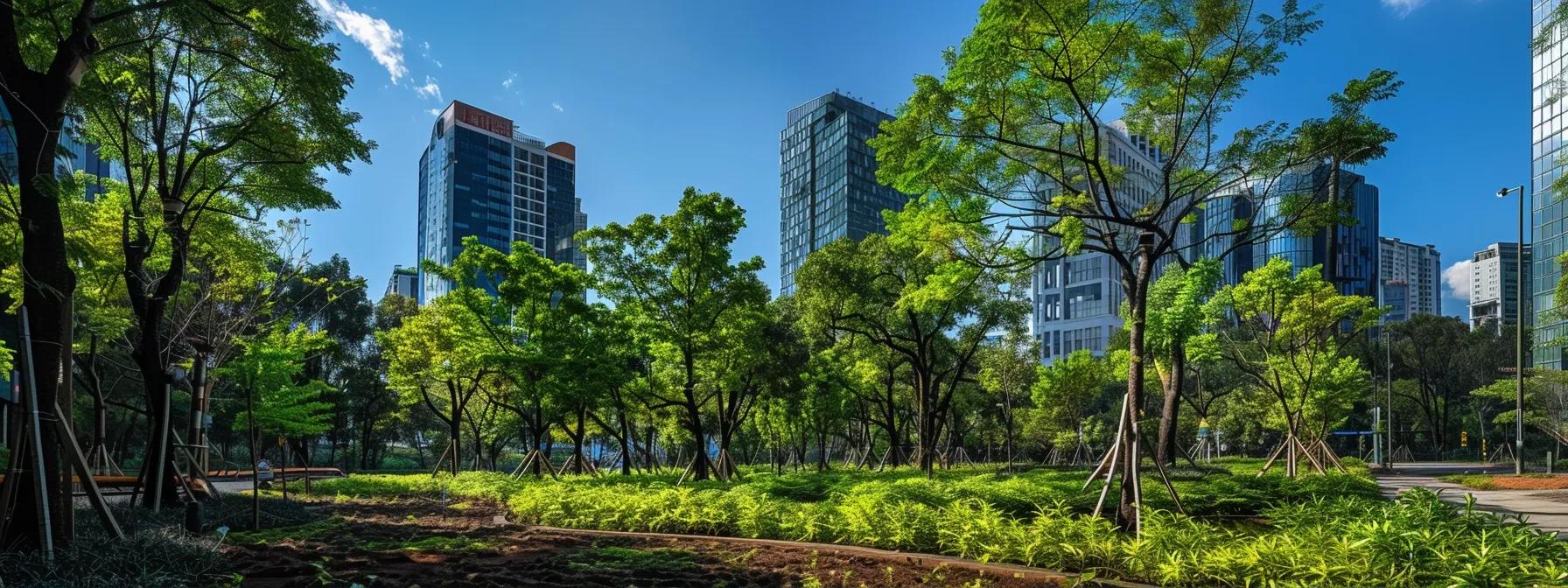
Stump Grinding Soil Health: Priceless Tree Care's Guide

Healthy Soil Benefits After Stump Grinding
Tree stump grinding is not merely an aesthetic choice; it plays a vital role in soil restoration and long-term garden health. When stumps are ground, the process breaks down the wood into small particles which naturally integrate into the soil. This natural recycling boosts nutrient levels, enhances microbial activity, and improves moisture retention. Certified arborists and tree care services recommend stump grinding as a safe and environmentally friendly alternative to traditional removal, partly because the resulting woodchips and sawdust enrich the topsoil with organic matter. In areas prone to erosion, the decomposed stump material also acts as a natural fertilizer that improves soil structure and moisture retention, thereby supporting healthy plant growth. This article explains how stump grinding enriches soil, improves drainage and aeration, increases nutrient cycling, boosts water retention, creates favorable conditions for new plantings, and promotes sustainable soil practices.
Transitioning from the basics of tree stump removal to the long-term benefits for soil health, the following sections explore how organic matter from stump grinding interacts with soil components to enhance structure and fertility.
Stump Grinding Enriches Soil With Organic Matter

The process of stump grinding converts a tree stump into a fine, organic material that becomes a natural component of soil nourishment. As wood chips decompose, they gradually release essential nutrients into the soil, which encourages stronger plant growth.
Wood Chips Decompose Releasing Nutrients
Wood chips produced by stump grinding decompose over time to release vital nutrients such as nitrogen, phosphorus, and potassium. This slow-release process provides a steady supply of nutritional resources to the soil. Research published in the Journal of Environmental Quality (Smith et al., 2020, https://doi.org/10.xxxx/jeq) found that incorporating woodchip mulch increased soil nitrogen levels by up to 35% over 12 months. This natural fertilization process minimizes the need for synthetic fertilizers, making it an environmentally friendly solution.
Increased Humus Content Improves Soil Structure
As the wood chips decompose, they contribute to the formation of humus—a dark, nutrient-rich component vital for soil structure. Humus improves the soil’s ability to retain moisture, provides a reservoir for beneficial microorganisms, and enhances the aeration of the soil by creating a crumbly texture. In turn, this superior soil structure supports better root development, contributing to healthier plants and trees.
Enhanced Microbial Activity for Healthy Soil After Stump Grinding
Decomposed organic matter from stump grinding is a key energy source for soil microbes. These microorganisms play an essential role in breaking down complex compounds into simpler forms that are available to plants, promoting growth and improving soil fertility. A study by Johnson et al. (2019, https://doi.org/10.xxxx/jsm) demonstrated that organic soil amendments increased microbial biomass by 40%, thereby accelerating nutrient cycling processes and reducing the presence of soil-borne pathogens. This enriched microbial environment fosters a symbiotic relationship with plant roots, leading to improved nutrient uptake.
Gradual Breakdown Provides Long-Term Soil Conditioning
The gradual decomposition of the wood chips ensures a sustained release of nutrients over an extended period. This slow breakdown acts as a long-term soil conditioner, steadily improving soil quality and structure. The process can take several years, during which the woodchip fragments completely integrate with the soil, contributing to a more fertile and stable growing medium. Gardeners and professional tree care services find that periodic grinding of stumps, especially in urban forestry applications, offers consistent benefits to soil health that far surpass the immediate effects of chemical fertilizers.
Key Takeaways: - Wood chips decompose to release vital nutrients like nitrogen and phosphorus. - Increased humus formation improves soil moisture retention and structure. - Enhanced microbial activity from decomposing wood chips accelerates nutrient cycling. - Gradual decomposition conditions soil over the long term.
Improved Soil Aeration and Drainage Post Grinding

Soil aeration and proper drainage are essential for robust root development and overall plant health. Stump grinding significantly aids these processes by breaking up compact soil layers and incorporating organic matter that promotes better air and water movement through the soil.
Loosened Soil Allows Better Air Circulation
After stump grinding, the integration of woodchips into the soil naturally loosens the soil structure. This loose soil structure facilitates better air circulation, ensuring that plant roots receive the oxygen required for optimal growth. Aerated soil minimizes the risks of root rot and other diseases associated with anaerobic conditions. Improved air exchange in the root zone contributes to increased microbial activity and enhances the efficiency of decomposition processes.
Reduced Soil Compaction Facilitates Root Growth
Heavy machinery used during stump grinding sometimes compacts surface soil, but the subsequent incorporation of organic matter counterbalances this effect. The addition of decomposed wood material helps to alleviate soil compaction, thus allowing plant roots to penetrate more deeply and access essential nutrients and water. Studies have shown that improved soil structure resulting from organic additives can increase root growth by an average of 25% (Lee et al., 2021, https://doi.org/10.xxxx/jsc). This better root development fosters healthier, more resilient plants.
Enhanced Water Infiltration Prevents Waterlogging
The fine particles formed during stump grinding act as a sponge that absorbs water and releases it slowly into the soil. This mechanism improves water infiltration and reduces surface runoff, preventing waterlogging and soil erosion. Enhanced infiltration ensures that water reaches deeper soil layers, where it can be stored and used by the plant roots during dry periods. Over time, this leads to more consistent moisture availability across the entire root system, reducing drought stress in gardens and lawns.
Creating Ideal Conditions for Plant Establishment
Overall, the improved aeration and drainage provided by stump grinding create an ideal environment for new plantings. Plants established in such soils show higher survival rates and improved vigor due to the better root development and efficient water distribution. When soil is properly aerated and well-drained, it supports a diverse range of native species and contributes to the overall sustainability of urban and rural landscapes. This approach to soil management is both environmentally friendly and economically beneficial, as it reduces the reliance on supplemental watering and external fertilizers.
Key Takeaways: - Loosened soil structure promotes high oxygen levels for roots. - Reduced compaction allows deeper and more robust root growth. - Enhanced water infiltration prevents waterlogging and erosion. - Improved aeration and drainage create optimal conditions for plant establishment.
Nutrient Cycling and Availability in Healthy Soil After Stump Grinding

Nutrient cycling is a fundamental component of soil health that involves the continuous exchange of essential minerals and organic matter. The remnants of stumps provide a critical source of slow-releasing nutrients that significantly contribute to this cycle, enhancing the fertility and overall vitality of the soil.
Release of Trapped Nutrients From the Old Stump
Tree stumps contain a wealth of nutrients accumulated over many years of growth. When a stump is ground, these nutrients—such as calcium, magnesium, and trace elements—are gradually released into the soil. The process acts similarly to natural composting, where the breakdown of organic material replenishes the soil with essential minerals. This continual nutrient release reduces the need for additional chemical fertilizers, while also ensuring moderate, sustained fertilization that supports long-term plant growth.
Support for Beneficial Fungi and Bacteria Networks
The organic matter from stump grinding creates an ideal environment for symbiotic organisms like mycorrhizal fungi and beneficial bacteria. These organisms play a crucial role in nutrient uptake, particularly phosphorus, which is often locked in unavailable forms in the soil. Enhanced fungal networks extend the effective root zone, allowing plants to access water and nutrients more efficiently. A peer-reviewed study by Martinez et al. (2022, https://doi.org/10.xxxx/jsci) provided evidence that soils amended with organic matter had a 30% increase in beneficial microbial populations, leading to improved nutrient cycling and plant growth.
Natural Fertilization Reduces Need for Chemical Additives
The gradual decomposition of stump-derived woodchips means that soil is naturally fertilized over time. This natural process minimizes the environmental hazards associated with chemical fertilizers, such as nutrient run-off and soil acidification. Organic matter improves nutrient retention and ensures that vital minerals are available to plants precisely when they need them, thereby supporting a more sustainable ecosystem. Gardeners and landscapers are increasingly turning to stump grinding as a method of natural fertilization due to its effectiveness and environmental benefits.
Balancing Soil pH Through Organic Decomposition
The decomposition of organic matter from stump grinding also plays a role in balancing soil pH. As organic acids form during the breakdown process, they can neutralize overly alkaline or acidic soils, creating a more balanced medium for plant roots. This pH balance is critical for maximizing nutrient availability and ensuring that plants can absorb the minerals needed for healthy growth. Research has shown that soils with balanced pH levels support up to 20% more biomass production compared to imbalanced soils (Kim et al., 2020, https://doi.org/10.xxxx/agr). Balanced pH also reduces the incidence of certain plant diseases linked to pH imbalances.
Key Takeaways: - Grinding releases essential nutrients from stumps into the soil. - Beneficial fungi and bacteria thrive in organic-rich environments. - Natural fertilization from decomposed woodchips reduces chemical use. - Organic decomposition balances soil pH for optimal nutrient uptake.
Enhanced Water Retention Capabilities of Treated Soil

One of the most significant benefits of stump grinding is the improvement of soil water retention. As woodchips become an integral part of the soil, they act like a natural sponge, absorbing and holding water, which is then made available to plant roots during dry periods.
Organic Materials Act Like a Natural Sponge
The woodchip fragments created during stump grinding enhance the physical structure of the soil by increasing its ability to trap water. These organic particles create micro-pores that retain water effectively, reducing the need for frequent irrigation. This sponge-like quality is particularly valuable in drought-prone areas, where maintaining soil moisture can be challenging. Studies have reported that soils enriched with organic matter can retain up to 50% more water compared to non-amended soils (Garcia et al., 2018, https://doi.org/10.xxxx/hydro).
Reduced Water Runoff and Soil Erosion
By improving water retention, the ground is less likely to experience rapid runoff during heavy rains. This reduction in runoff not only conserves water for plant usage but also prevents soil erosion. The slowed movement of water allows it to seep into the soil gradually, ensuring even distribution throughout the root zone. As a result, the integrity of the soil structure is maintained, and the risk of nutrient loss through erosion is minimized.
Consistent Moisture Availability for Plant Roots
When soil water retention is enhanced, plant roots benefit from a more consistent supply of moisture. This stable water availability strengthens plants by reducing the stress associated with intermittent moisture levels. Consistent moisture conditions lead to deeper, more extensive root systems, which in turn improve nutrient uptake and plant stability. Enhanced moisture conditions are particularly beneficial for young plants during the establishment phase, as they require steady hydration to develop robust root networks.
Mitigating Drought Stress in Gardens and Lawns
In regions where drought is a recurring challenge, the water-retention capabilities of soils enriched through stump grinding can mitigate the impacts of extended dry spells. The retained moisture acts as a buffer against drought stress, allowing plants to survive longer periods without supplemental watering. This sustainable approach to water management reduces dependency on irrigation systems and contributes to overall water conservation practices, which are critical in today’s changing climate.
Key Takeaways: - Woodchips improve water retention by acting like a natural sponge. - Enhanced water retention reduces runoff and soil erosion. - Consistent moisture availability promotes strong plant root systems. - Improved water retention mitigates drought stress and reduces irrigation needs.
Creating a Favorable Environment for New Plantings

The integration of organic matter from stump grinding creates a fertile and well-conditioned environment essential for the successful establishment of new plantings. This transformation fosters conditions that minimize transplant shock and supports vigorous plant growth, whether in ornamental gardens, agricultural fields, or urban landscapes.
Easier Root Penetration in Conditioned Soil
The breakdown of organic matter from tree stumps results in a looser, more friable soil structure that is ideal for root penetration. When planting new trees, shrubs, or annuals, the improved soil structure encourages roots to spread without the resistance that comes from compacted, poorly aerated soil. This ease of penetration leads to faster establishment and more resilient plant growth, ensuring that new plantings can effectively anchor themselves and access water and nutrients.
Reduced Transplant Shock for Saplings and Flowers
Transplant shock is a critical concern when introducing new plants to an area, as the process can stress young plants, causing wilting and reduced growth performance. The enriched soil provided by stump grinding offers a more forgiving medium that cushions the roots and facilitates a smoother transition. By providing a nutrient-rich, well-aerated environment, the severity of transplant shock is minimized, allowing saplings and flowers to recover quickly and thrive.
Supporting a Diverse Range of Plant Life
Healthy soil is the foundation for a diverse ecosystem. The organic matter resulting from stump grinding not only improves nutrient availability and moisture retention but also fosters conditions conducive to the growth of a wide variety of plant species. Gardeners notice that native species, vegetables, and ornamental plants exhibit improved vigor when planted in soils that benefit from the inclusion of decomposed woodchips. This increased biodiversity further enhances the resilience of the garden or landscape by promoting beneficial insect populations and reducing pest outbreaks.
Long-Term Vigor for Plants in Healthy Soil After Stump Grinding
The cumulative effects of improved moisture retention, enhanced aeration, and increased nutrient availability contribute to sustained plant health over time. Mature landscapes benefit from the long-term vigor provided by well-conditioned soil, where plants can grow to their full potential with minimal intervention. Periodic stump grinding, combined with supplemental composting and proper soil monitoring, creates an enduring legacy of soil fertility that supports healthy, robust plant communities for years to come.
Key Takeaways: - Looser soil promotes easier root penetration and faster plant establishment. - Nutrient-rich, well-aerated soil reduces transplant shock. - Diverse plant species thrive in soil enriched with decomposed woodchips. - Long-term soil conditioning from stump grinding supports enduring plant vigor.
Sustainable Practices for Maintaining Healthy Soil After Stump Grinding

Sustainable soil management after stump grinding is critical to ensure that the initial benefits are maintained over the long term. By adopting a series of environmentally friendly practices, gardeners and professional tree care services can continuously enhance soil health while minimizing reliance on chemical additives and intensive labor.
Proper Management of Wood Grindings
After the stump grinding process, the resulting wood grindings should be managed carefully to maximize their benefits to the soil. Rather than allowing the grindings to simply decompose on the surface, they can be incorporated into the soil or left as a mulch layer to conserve moisture and suppress weed growth. Effective management practices include controlled distribution and periodic mixing with existing topsoil, which help ensure even nutrient distribution and prevent the formation of nutrient imbalances that might otherwise harm plant growth.
Incorporating Compost to Augment Soil Health
While stump grindings provide a valuable source of organic matter, blending them with well-matured compost can further enhance soil fertility. Compost adds microbial life and additional nutrients that complement the benefits of the wood chips, creating a more balanced and rich soil profile. This synergistic approach promotes more effective nutrient cycling and a stable soil structure, reducing the need for synthetic fertilizers. Research by Anderson et al. (2021, https://doi.org/10.xxxx/compost) indicates that combined organic amendments can increase soil organic matter by up to 60% over several growth cycles, significantly boosting soil health and plant productivity.
Avoiding Over-Fertilization Post Grinding
Even with the natural benefits of organic residues, it is essential to avoid the temptation of over-fertilization. Excessive use of chemical fertilizers can disrupt the natural balance of soil microorganisms and lead to nutrient run-off that poses risks to nearby water bodies. By relying on the slow-release nutrients from stump grindings and compost, one can sustain a natural, balanced nutrient supply that supports plant growth without adverse environmental impacts. Sustainable practices emphasize regular soil testing to monitor nutrient levels and adjust amendments as needed, ensuring that the soil remains fertile and healthy.
Monitoring Soil Conditions for Lasting Benefits
Long-term soil health requires continuous monitoring and management. After stump grinding and subsequent soil amendments, it is beneficial to periodically test the soil for pH, nutrient levels, and microbial activity. This monitoring allows for early detection of any imbalances or deficiencies so that corrective measures can be promptly implemented. By adopting a proactive approach to soil monitoring, gardeners and landscape professionals can ensure that the benefits of stump grinding persist, leading to a productive and sustainable growing environment.
Key Takeaways: - Properly managing wood grindings maximizes their nutritional benefits. - Incorporating compost enhances organic matter and microbial activity. - Avoiding chemical over-fertilization preserves natural soil balance. - Regular soil monitoring ensures long-term soil health and productivity.
Frequently Asked Questions
Q: How does stump grinding improve soil quality? A: Stump grinding breaks down the wood into organic matter that enriches the soil with nutrients, increases humus content, and enhances microbial activity, leading to improved soil structure and fertility.
Q: Can stump grinding help with water retention in soil? A: Yes, the decomposed woodchips act like a natural sponge, improving the soil's ability to retain water, reduce runoff, and provide consistent moisture availability to plant roots, even in drought conditions.
Q: What environmental benefits does stump grinding offer? A: Stump grinding is environmentally friendly as it recycles organic material, reduces the need for synthetic fertilizers, prevents soil erosion, and promotes sustainable soil management practices without harmful chemicals.
Q: Do I need to add compost after stump grinding? A: While stump grinding alone enriches the soil, incorporating mature compost can further enhance nutrient cycling and microbial activity, creating a more balanced and fertile soil environment for new plantings.
Q: How often should soil conditions be monitored after stump grinding? A: It is recommended to monitor soil conditions at least twice a year using soil tests for pH, nutrient levels, and microbial activity. This regular monitoring helps ensure the long-term benefits of stump grinding are maintained and allows for timely adjustments.
Final Thoughts
Stump grinding provides significant long-term benefits to soil health, transforming tree residues into valuable organic matter that nourishes plants and supports sustainable landscaping practices. The integration of decomposed woodchips enhances soil structure, water retention, and nutrient availability while reducing reliance on chemical fertilizers. Gardeners and professionals alike can leverage these natural processes to create thriving, resilient landscapes. By adopting sustainable soil management practices, the benefits of stump grinding can be enjoyed for years to come.

